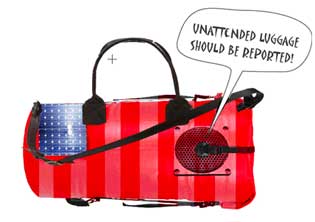Survival Mosque is a kit containing elements for the self protection of Muslims living in the USA today: an American-flag pattern that communicates patriotism, an umbrella that surveys one’s back, washing solution for ablution and for cleaning when a Muslim get spit on, ear plugs against insults, American constitution proofing rights of American Muslims, a loud-speaker with speech on tolerance held by President George W. Bush, educative books, communication devices, etc. The mosque is self-sufficient; the prayer rug is supplying its own energy source via photo-voltaic solar cells. The Survival Mosque can be transformed and camouflaged into bags, which communicate with each other via bluetooth. The bag-speakers reflect paranoia spreading messages regarding terrorism, but they can also function as muezzins; calling for prayer at prayer times. The kit challenges the way diverse prejudices and fears to Muslims could be reversed.
Survival Mosque is only one of the many projects developed by Azra Akšamija to explore ways of negotiating spatial relationships of Islamic religious practices and identities in a secular and contemporary context. Born in Sarajevo, Azra is an Austrian artist and architect based in Cambridge, USA. Since fall 2004 she is a Ph.D. candidate in the Department of Architecture (History Theory and Criticism Section / Aga Khan Program for Islamic Architecture) at MIT. She is currently researching her dissertation on contemporary mosque architecture in post-socialist Bosnia and Herzegovina.
Azra Akšamija´s mosque projects address states and needs of a cosmopolitan generation of Muslims, and provide a reinterpretation of the underlying histories and cultural traditions. Whether they take the form of a landscape of prayer-rugs installed in public space or the form of a series of Wearable Mosques, her projects reveal the variable typology of the mosque, which can adapt itself to the different contexts and cultures. One of Akšamija´s aims is to shift the focus from the biased and politicized representations of Islam in favor of the beauty of artifacts from Islamic aesthetic culture.
I found so many fascinating elements in each of her works (attention to details, crucial contemporary issues and originality in the way she engages with them, references to both traditional and modern culture, etc.) that i had to bother her with my many questions:
Do you see the items of clothing related to your Nomadic Mosque project as garments that could be really used and worn or more as a mean to trigger discussion?
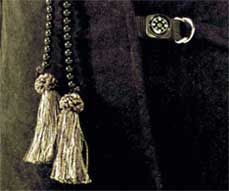
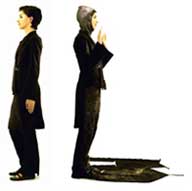 The Nomadic Mosque, clothes that can be transformed into prayer-rugs
The Nomadic Mosque, clothes that can be transformed into prayer-rugs
The “wearable mosques� are meant both to provoke discussions and to be used for prayer. My intention was to question and deconstruct the established categories that define mosque architecture, which, as a form of representation, designates Islamic cultures. If I call a suit or a jacket a mosque, I had to design them to fulfill liturgical necessities, as well as other important social functions that mosques usually provide. Otherwise, these objects could not be called mosques. However, these clothes also show that mosques do not have to be designed as buildings. Different kinds of spaces, such as apartments or sports halls, can also be reused to become mosques and provide prayer space and social services. By designing wearable mosques I not only investigate formal limits of the mosque architecture, but also propose a novel way of communicating Islamic presence and identity on an individual level.
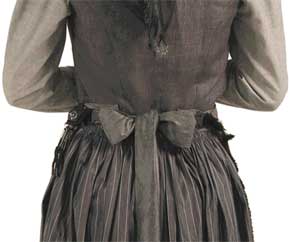 The Dirndl, a traditional Austrian dress inspired the Dirndlmoschee which can be transformed into an Islamic prayer environment that provides a prayer space for 3 people
The Dirndl, a traditional Austrian dress inspired the Dirndlmoschee which can be transformed into an Islamic prayer environment that provides a prayer space for 3 people
How did people from various religious beliefs react to them? Which kind of discussion do these works give rise to?
The wearable mosques function as communicators with and between Muslims and non-Muslims. My first interaction involving these clothes happened on the beach in Boston, when I was filming a video about prayer and ablution at different places. I coincidentally met a passerby Muslim woman there, whom asked to pray with me. Unexpectedly, she was not even surprised my proposal, and she agreed to help me with the video. The nicest moment during this action was that she started helping me to unfold the clothes, and this, for me, represented an act of bonding through the mosque itself.
Since then, I have been showing the wearable mosques to varied people, such as the students of the Muslim Student Association at MIT, high school children, the Grand Mufti of Bosnia-Herzegovina, as well as mixed art audiences at various venues. Once, I was also invited to talk to children at a Unitarian Church in Boston as a part of their religious education, and we laughed the fact that a mosque came to visit a church, literally. In all these cases, people reacted to my projects very positively. Themes that come up in such events and discussions regard the position of religion and spirituality within secular contexts, understanding of the mosque as ephemeral space, necessity of domes and minarets for mosques, gendered spaces in Islam and position of women in the mosque, as well as issues of cultural identity.
It seems that the wearable mosques allow for discussion of these themes in a novel way. Most recently, I have also been contemplating about them becoming a product. My intention is to create an online shop for wearable mosques and other religious equipment, which would bring together designers, producers and consumers from different cultures and age groups with an economic concept. “Mosque as a product� could fulfill various charitable functions, give work to unemployed women, and act as a social binder across cultural, political, and geographic boundaries.
Your garments –such as the Dirndlmoschee dress or the Frontier Vest, seem to be very carefully designed and crafted, yet your background is not in fashion design but in architecture. Which kind of relationship do you perceive between architecture and fashion design?
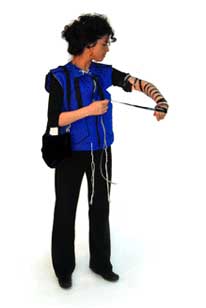
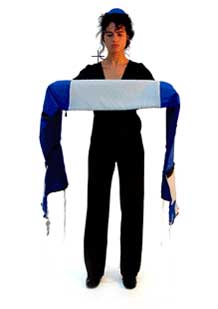 The Frontier Vest hybridizes different religious equipment and a contemporary vest design
The Frontier Vest hybridizes different religious equipment and a contemporary vest design
My projects show that fashion design can also be understood as wearable architecture. The mosque could be described by the space a worshipper occupies while praying towards Mecca. This means, that the minimal volume of the mosque is actually defined by the human body. In that sense , my wearable mosques represent customized architectural expressions of an individual identities. Although they are clothes, I consider them not only as fashion, but as “statements to wear�.
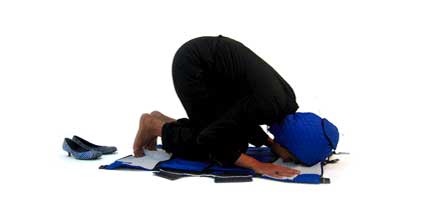 The Frontier Vest
The Frontier Vest
Did you have to get some help from a fashion designer or follow some fashion courses?
I do occasionally get professional help with the more complicated garment parts or if I have no time for sewing. However, I prefer to produce all the prototypes myself, because the very process of making clothes involves conceptual decision making. I have learned to saw when I was 12 years old. I took a basic sewing course for factory workers in Sarajevo, where I come from, where I learned to take sew from sewing patterns. I mostly take patterns from magazines or from existing clothes and then change and appropriate these according to my own sketches and ideas.
There’s a strong sense of humor in Survival Mosque. How much do you think that humor can stimulate or hinder the understanding of a critical art work?
I think humor could be very stimulating to the understanding of a critical art work, it can also help avoid moralizing, which allows for a better receptivity on the part of the viewer. However, there is a fine line between being funny and being humorous, but taken seriously. That is why I invest a lot of time in developing my projects, adding ideas and taking them out again, until I feel I have reached the right balance. For me it is important that the project remains respectful to the viewer and to its subject matter, and this can be achieved by communicating depth of knowledge about the subject and allowing for its multiple readings.
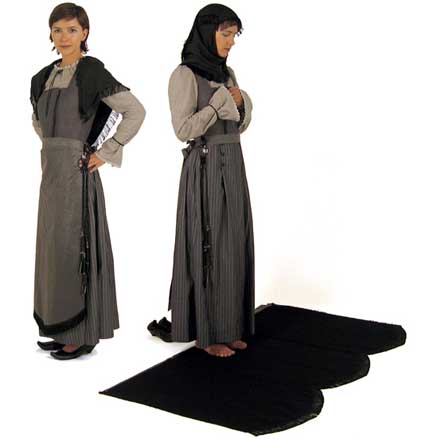 Dirndlmoschee [Dirndl Dress Mosque]
Dirndlmoschee [Dirndl Dress Mosque]
Several designers, artists and architects have worked on the idea of wearable architecture. Is there anyone in particular whose work in that field you admire or who has influenced your own research?
Krzysztof Wodiczko’s interventionist art projects, and Lucy Orta’s transformable clothes have informed my work. They are among artists who I highly admire and see as teachers. Krzysztof Wodiczko was my professor at MIT and I developed my fist prototype for the “Nomadic Mosque� within his class “Interrogative Design Workshop� that dealt with the notion “fearless speech� in public space. Prof. Wodiczko and my classmates have greatly contributed to the development of my projects.
Thanks Azra!
The work of Azra Aksamija is part of the group show Encounters which runs at the Stadsgalerij Heerlen (NL) through November 11, 2007. The works presented in Encounters examine the tension between the dominant visual culture, often confirmed by the ‘official’ media, and possible alternative visions. They function as a starting point for people to ask questions about themes such as democratisation, emancipation, and globalisation.


